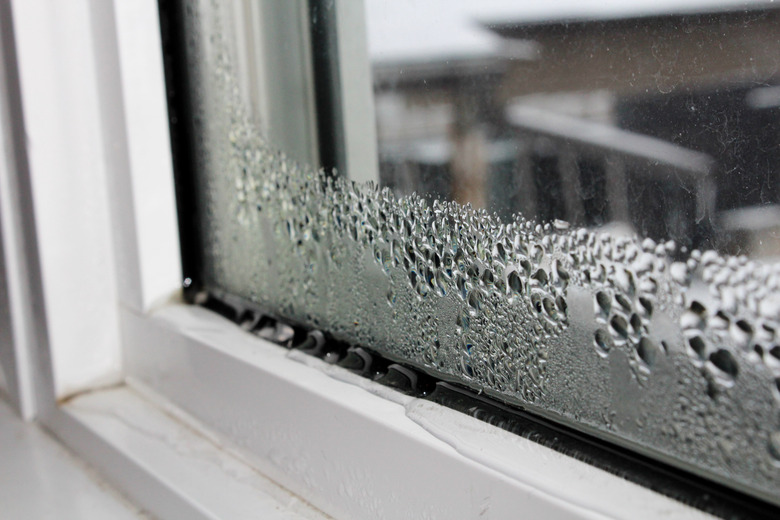Examples Of Adsorption
Adsorption is a phenomenon in which molecules of gas, liquid or solid become attached to a solid surface. Intermolecular forces attract the molecules, causing them to cling to the surface. Adsorption and absorption differ in that the latter is about a solid soaking up a liquid or gas into its substance. Physicists, chemists and other physical scientists study adsorption to understand how liquids and gases interact with solids.
Misty Windows
Misty Windows
Water molecules cling to window glass, making it fog up in warm months and turn frosty in winter. Although usually invisible, some moisture is always present in the air; occasionally a water molecule bounces against a window and a small electric attraction makes it stick there. Over time molecules pile up and form droplets; when a droplet becomes sufficiently heavy, the force of gravity becomes greater than the stickiness and a drop rolls down the glass.
Water Filter
Water Filter
The activated carbon inside a water filter adsorbs contaminants dissolved in the water, pulling them out and trapping them in the filter. It captures impurities including dissolved chemicals, bacteria and microscopic solid particles. The carbon is in powdered form, giving it an extremely large effective surface area. The large surface area gives the carbon a good chance of removing impurities. When enough water has passed through the filter, the carbon eventually becomes clogged with contaminants; when this happens, you remove the filter and replace it with a fresh one.
Gases on Steel
Gases on Steel
Scientists who work with specialized vacuum chambers contend with gases that adsorb to stainless steel. Although steel is an excellent material for vacuum systems, as it seals tightly and can take temperature extremes well, it also unfortunately attracts a thin layer of water, oxygen, nitrogen and other substances from the air. When creating a vacuum in a stainless steel chamber, a technician may "bake out" the system by heating it to temperatures over 120 degrees Celsius (248 degrees Fahrenheit), forcing the molecules off the steel surface. Once the vacuum has been established, the steel remains relatively free of unwanted molecules; however, when the chamber is brought to back to normal atmospheric pressure, contaminants re-adsorb from the air to the metal.
Paint
Paint
If it were not for the attractive forces between a solid and paint molecules, paint would slip off and not stick to a surface. Adsorption is therefore an essential part of the painting process; molecules of liquid paint cling to wood, metal, plastic and other materials, allowing it to dry in place. Different paint formulations are necessary to ensure adsorption to various materials is strong enough to hold the paint to the surface until it can form stronger and more permanent chemical and mechanical bonds.
Cite This Article
MLA
Papiewski, John. "Examples Of Adsorption" sciencing.com, https://www.sciencing.com/examples-adsorption-18540/. 9 March 2018.
APA
Papiewski, John. (2018, March 9). Examples Of Adsorption. sciencing.com. Retrieved from https://www.sciencing.com/examples-adsorption-18540/
Chicago
Papiewski, John. Examples Of Adsorption last modified August 30, 2022. https://www.sciencing.com/examples-adsorption-18540/
